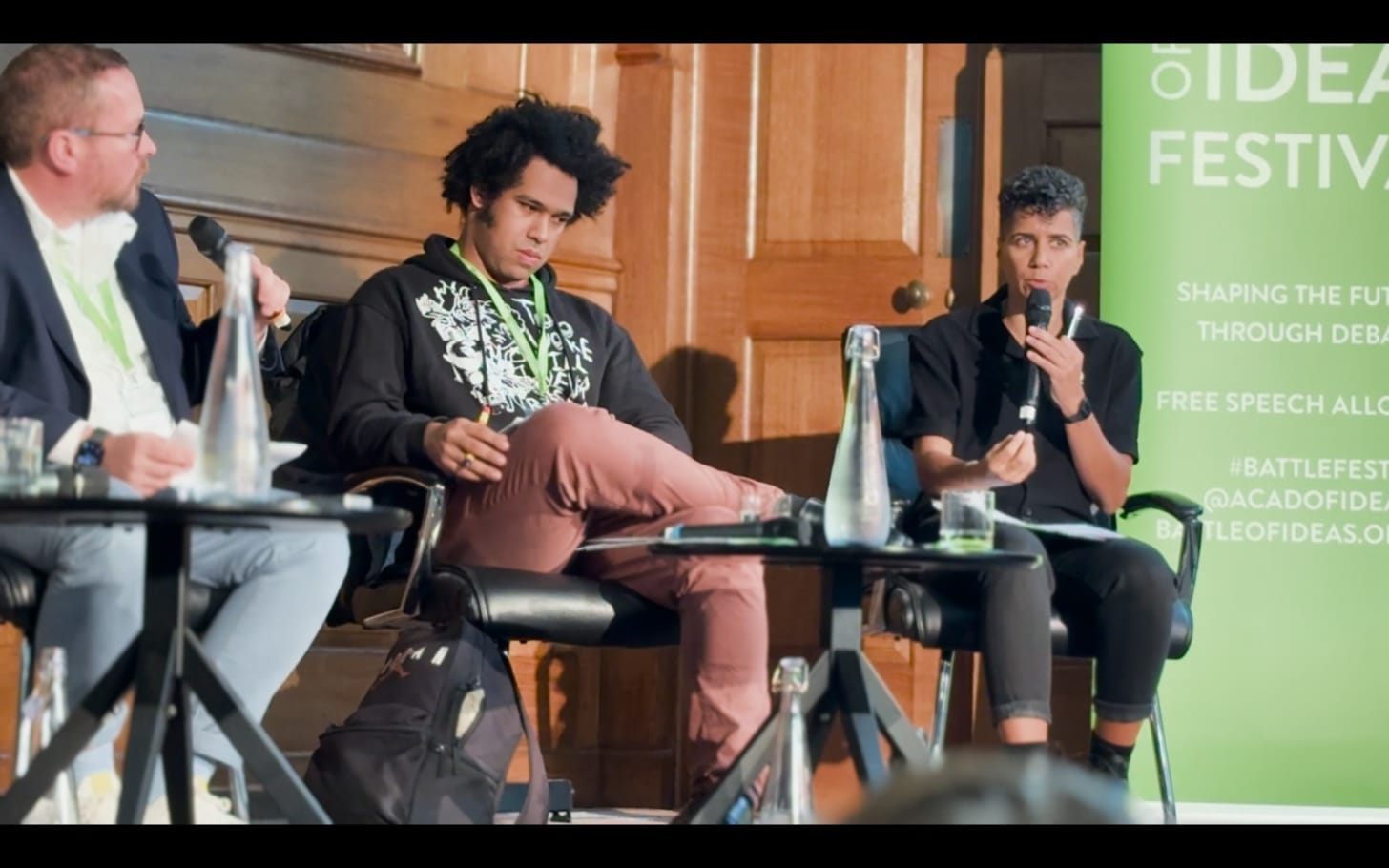This weekend, I spoke on a panel at the Battle of Ideas festival: Face time? The pros and cons of burqa bans. Here’s the case I made for a ban, from a women’s rights perspective.
I am going to make three arguments for a burqa ban - and while we’re at it, for a niqab ban too. I will address the positions that are usually brought up in this discussion: that a burqa is a form of clothing and religious practice, that in some cases it represents a woman‘s choice and that change of this practice should come through education and social reform.
One: the burqa is not a piece of clothing. Framing this as the policing of clothing - or worse: women’s clothing - is to fall into a conceptual trap. The complete covering of a woman from head to toe is not a choice of clothes. The sole function of this piece of fabric designed by men is social and it is to make women and their autonomy disappear from the world around. This does not happen in a vacuum. It is not a theoretical or philosophical question about the (neutral) potential of fabric that covers a (neutral) body, and whether or when this might be considered (acceptable) clothing. There is one country - Afghanistan - that shows the world, in real time, what the burqa is made for; and many others that use approximations of it for precisely the same purpose. The burqa is not a piece of clothing.
Nor is it a private act of faith or religious observance. It is, specifically, a public practice. One that seeks to regulate the visibility of women in society. It is a cultural artefact of control. And we already restrict practices that claim religious justification when they violate basic human rights: forced marriage, child marriage, female genital mutilation. A burqa ban is not religious persecution. It is the defence of universal human dignity, the recognition that no belief system should be permitted to erase half of humanity from public life.
Two: Some women‘s choices cannot be allowed to subjugate all women. The burqa is not a variation on the theme of modest clothing. It is the symbolic expulsion of women from public life as embodied subjects - with a face that is the site of connection and recognition. It denies women existence as perceptible human beings to anyone outside the private family sphere - where men are already certain of their control. And yes, some women willingly submit to that control, for whatever reason. As they do to other harmful practices, yet we do not follow their logic and indulge their beliefs. There is no empowerment in wearing the burqa. It is always easier to frame one’s story as triumph rather than defeat, as choice rather than victimhood. But behind every burqa is a story - one that tells of women‘s circumstances and opportunities: whether they can leave their family home, move freely and live where and how they choose, whether they marry and whom, how they can decide on motherhood, whether they can work, whom they can befriend, how far they can go. The burqa is the visible signifier of all the choices that cannot be made.
Three: If we agree that the burqa is a harmful symbol, an expression of the subjugation and hatred of women, shall we then proceed to ban it? There will be no sudden moment of realisation or change of heart among those who benefit from it. The burqa is part of a social system that can’t be reformed while it’s still normalised. It is the visible extreme of an invisible order. The mark of a ruling class of men, whether in a country, a community or a family. A burqa marks you - and renders you invisible at the same time. Those who become visible - as both perpetrators and victims of an extremist ideology - are the women: those who stand out, yet remain unseen. Not the men. They move through the world unmarked and unbothered. It is the women who are deprived of the ability to exist as social human beings, participating in a world that they can fully engage with. The state has a responsibility to draw a line and ensure that women’s rights are not surrendered to private codes of control and coercion. If the price of appearing in public is total anonymity, the public ceases to be shared. It becomes male-only by design. A ban is not a punishment of women, but a refusal to accept a civic space built on their disappearance. When the state abstains, it leaves women alone in negotiations with families, imams or local pressure. A law sets a civic norm and establishes boundaries that protect women and girls. Cultural change alone has failed to protect women from coercive or segregationist norms in many contexts.
In conclusion: The problem is not muslim presence, but female absence. The objection is feminism. And the debate is between those who see women as full citizens and those who don’t.
.png)



